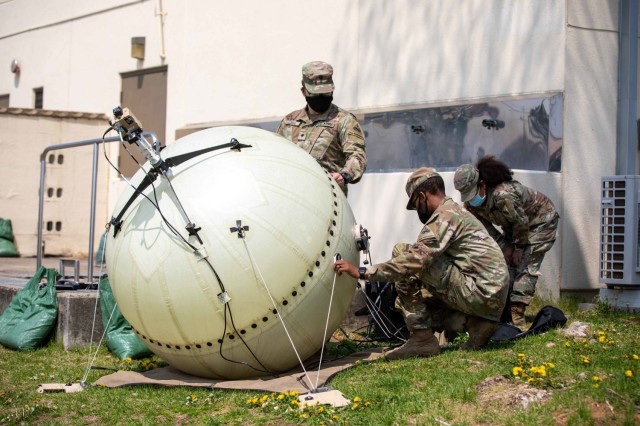
U.S. ARMY GARRISON HUMPHREYS, Republic of Korea — The Ready First Brigade will be prepared to order vital parts and supplies thanks to training received on the Combat Service Support Very Small Aperture Terminal, or CSS VSAT, an inflatable satellite antenna this past week.
Soldiers of 1st Armored Brigade Combat Team, 1st Armored Division, from Fort Bliss, Texas, were taught how to set up and operate the Army’s new inflatable satellite antenna, or ISA.
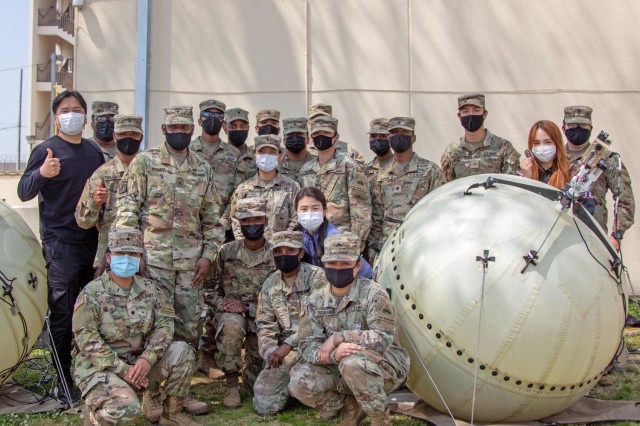
For Army logisticians who sustain their units with critical supplies, repair resources and parts, one of their most important tools is the CSS VSAT, a mobile satellite terminal found at every MSC within Eighth Army.
Eighth Army was the first unit to receive ISA systems. It is a lightweight, versatile satellite terminal, which Soldiers can set up and connect to a satellite to conduct logistics operations in the field. Soldiers can order anything from vehicle parts to medical supplies.
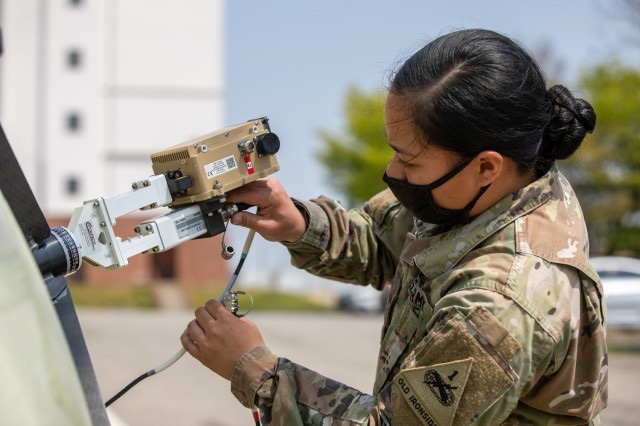
“In the [supply support activities], we support the requisition process of parts for customers, so in order for us to do that we have to put the order in the system of record, GCSS-Army, we depend on this internet connectivity that the ISA provides,” said Cpl. Faustina Fetalaiga, 501st Brigade Support Battalion, 1st ABCT, 1st AD. “This week we learned how to set up and operate the ISA and how to get the right azimuth to get the correct signal, so we are able to use the internet to order parts when we go to the field.”
For a week, the students from various 1st ABCT units from Camp Humphreys and Camp Casey took classroom lessons and later set up their ISA systems, which then connected to a satellite above Earth. The goal is to have each Ready First Brigade Soldier able to return to their units and set up and employ the ISA.
The class was taught by instructors from the 19th Expeditionary Sustainment Command Logistics Training Team.
The ISA system looks different than the legacy version; its dish sits inside a 1.2-meter inflatable ball. The ISA is more expeditionary than the legacy version because it only weighs approximately 150 pounds and packs into just two cases. It is designed so two Soldiers can set up the ISA in less than 30 minutes, compared to more than 45 minutes for the previous system, according to U.S. Army Communications-Electronics Command.
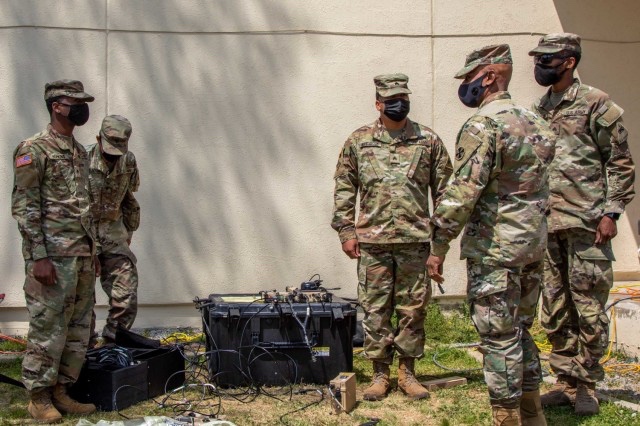
“The ISA is more compact, you can pack it up very quickly and bring it to another location if you need to move,” said Sgt. Tony Harrington, Sustainment Automation Support Management Office noncommissioned officer in-charge for 501st Brigade Support Battalion, 1st ABCT, 1st AD.
Harrington is an information technology specialist team leader who will help fix any issues Soldiers have with the ISA in the field.
“The legacy VSATs back in the states come in big boxes that you have to carry around to different places,” Harrington said. “We learned the setup and tear down process for the ISAs and my team and I have a lot of experience with the legacy VSATs so we’ll be able to troubleshoot any connectivity problems with the ISA if needed; it’s almost the same process.”
Harrington added the training is good for the Soldiers because it will help them set up the ISA properly and limit the amount of trouble calls his team gets so he’ll be available to help other Soldiers with troubleshooting issues.
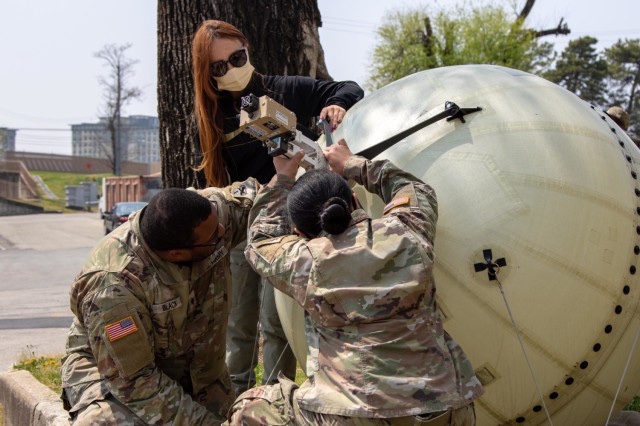
Despite its appearance, the ISA will not pop like a balloon if punctured. The new system is also designed to withstand interference because wind tends to travel around its round shape as opposed to an exposed satellite dish. The ISA also can operate in additional spectrum bands, according to U.S. Army Communications-Electronics Command.
According to David Moody, 19th ESC, Logistics Management Specialist instructor, Eighth Army and U.S. Army Pacific are the only U.S. Army units to use the ISA right now. He and his team have been conducting continuous training on the ISA since it arrived and are fulfilling Eighth Army G4’s request to have rotational brigade Soldiers trained to set them up for success.
“I was asked back at Fort Bliss if I wanted to attend this class before we deployed,” said Fetalaiga. “This class has been great and I appreciate the civilian instructors. I’m glad I told them I wanted to attend.”
By Kenji Thuloweit
Photos by PVT Lee, Hee-won


i´m a little naughty:
https://www.youtube.com/watch?v=1IS6DEUZ_gs&t=10s